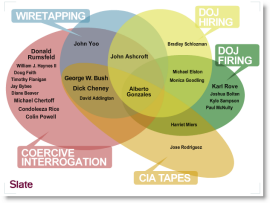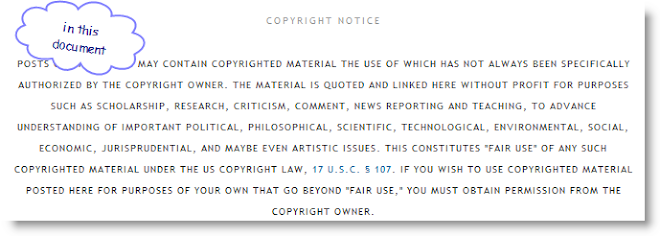| The Daily Show With Jon Stewart | Mon - Thurs 11p / 10c | |||
| Sean Hannity Apologizes to Jon | ||||
| ||||
Friday, November 13, 2009
Jon Stewart | Sean Hannity
Tuesday, November 03, 2009
Complexity, by Roger Lewin: The complexity perspective, in business
Complexity, by Roger Lewin: The complexity perspective, in business
Pp. 198-202:
If, as complexity scientists believe, complex adaptive systems of all kinds -- in the natural world and the world of business -- share fundamental properties and processes, then the science offers a way to understand and work with the deep nature of organizations. Because the dynamics of complex adaptive systems are complex and largely unpredictable, accepting businesses as being such systems requires a mindset different from that associated with long-established business models: managers and executives cannot control their organizations to the degree that the mechanistic perspective implies, but they can influence where their company is going, and how it evolves.
In nature, species exist in an ecological community as part of a rich network of connections, forming the local ecosystem that has system-level properties. In the same way, companies operate within a rich network of interactions, forming the local economy on a local scale and the global economy on a global scale. An important point about the view of businesses through the complexity science lens is that businesses do not merely resemble natural ecosystems; rather, they share some fundamental properties -- specifically nonlinear processes -- because both are complex adaptive systems and thus follow the same deep laws. These laws will not play out in exactly the same way in economies as they do in biology, largely because in economies conscious decisions are made by people, whereas in biology there is no conscious intent of that kind. Nevertheless, an understanding of these laws in nature will lead to a greater understanding of the workings of companies and the economy of which they are a part.
The Origin of Mechanistic Management
In 1992, the Harvard Business Review carried an article titled "Is Management Still a Science?" The author, David Freedman, answered the question thus: "Management may indeed be a science -- but not the science most managers think."' In other words, the way scientists perceive the world has changed dramatically in recent decades, but many managers still follow an outdated scientific mind set, one that is now heading toward the intellectual scrap heap -- namely, the mechanistic, reductionistic perspective.
The prevailing style of management was developed early this century by Frederick Winslow Taylor, an American industrialist. His book, The Principles of Scientific Management, published in 1911, became a classic in management literature, and its effect lingers today. Taylor was strongly influenced by prevailing scientific thought, particularly Newton's laws of motion and the new science of thermodynamics, which together allowed scientists to calculate how a machine could operate with maximum efficiency. Taylor imposed this collective, mechanistic paradigm of science on the world of work, where he became obsessed with efficiency as applied to organizations. There was tremendous waste of effort, he said, because management was unscientific.
In the best reductionist tradition, Taylor analyzed the system down to its component parts, saw how each worked, and then sought the "one best method" to attain the greatest possible efficiency. Workers, he said, were to be viewed as "passive units of production," and the system, or the workplace, was like a machine. The job of the manager was to ensure that the machine ran smoothly. The workers, while offered financial incentives for faster work, were merely cogs in the machine. The system was extremely hierarchical, with workers expected simply to carry out their narrowly-defined jobs.
Taylorism was responsible for tremendous increases in productivity in the workplace, and effectively created modern Industrial Age management. Although management theory has undergone many revisions since the early decades of the century, particularly with the impact of Peter Drucker's thinking,2 Taylorism still remains the dominant influence today, with the machine model of business as its core, and embodied in a command and control style of management.
By contrast, complexity science implies that CEOs and managers must give up control -- or, rather, the illusion of control -- when they are trying to lead their organization to some goal. But they do need to create the environment in which creativity can emerge. The message of complexity science is not simply to stand back and wait for the right solutions to emerge. Too little control is just as misguided a business strategy as too much. Some structure is necessary. The degree and nature of control that CEOs establish in their companies strongly influences what emerges, in terms of culture, creativity, and adaptability.
The Complexity Perspective in Business
The recognition that businesses are complex adaptive systems allows us to learn more about business dynamics -- within and among companies -- based on what is known about such systems, in computer simulations and in nature.
In other words, complexity science offers a new management theory. Most management theories attempt to transform businesses into something new, something that is supposedly designed to make them more efficient, such as the recent (and now faded) enthusiasm for reengineering. Complexity science says, let us recognize that businesses are complex adaptive systems -- and always have been.
You don't have to bring complexity to the world of business: It is already there. We saw in earlier chapters that computer-based complex adaptive systems can be tuned to a static state, a chaotic state, or to a zone of creativity in between, the edge of chaos. A command-and-control, or mechanistic, style of management tends to keep companies close to the static state, because it minimizes interactions among its components, which in turn impedes the emergence of creativity from the level of front-line people. This model of management worked well enough in the Industrial Age economy, but is much less effective in the connected economy. The challenge for managers -- indeed, for anyone who works -- today is to find ways of enhancing the potential creativity of businesses as complex adaptive systems, from the level of the individual, through teams, to the organization as a whole and its interaction with other organizations.
It is important to recognize, however, that mechanistic management is sometimes appropriate, when goals are clear and there is little uncertainty in the prevailing business environment. Management practice guided by complexity science therefore does not replace mechanistic management.
Rather, it encompasses it in a larger context. As we said, it even welcomes periods of chaos as not only natural but sometimes desirable. For instance, when old ways of doing things have to be abandoned and new ways found, a brief period of chaos allows the exploration of many different possibilities in an innovative manner. So, just as natural complex adaptive systems fluctuate among the three states-stasis, chaos, and edge of chaos depending on the prevailing environment, so, too, will a company fluctuate among the three states. Such fluctuation represents the capacity to adapt to changing environments.
One of the key discoveries of complexity science, as we saw in chapter 3, is that computer models of complex adaptive systems often evolve themselves to a critical point poised between the chaotic and static states, the edge of chaos, where the emergent response is most creative. There are strong indications that the same is true in nature, as we saw in chapters 4 and 6. Order emerges at the edge of chaos -- this is the phenomenon of self-organization. The order that arises is not imposed from above; it flows from distributed influence through the interactions of the system's agents. It is hard -- and often impossible -- to predict in detail what emergent order will look like, but it is certain that order will emerge.
Complexity models also show that the emergent order will be richer, more creative and adaptable, if there is a diversity of agents in the system, agents with different characteristics and different behaviors.
The message for business leaders is obvious: encourage diversity if you want to achieve creativity and adaptability. Nurture distributed control -- that is, true empowerment -- and people will self-organize around problems that need to be solved.
P. 211:
These aspects of complex systems-unpredictability and the possibility of extinction because of changes in other parts of the system -- are distinctly unnerving to those who cherish predictability and control. Embracing complexity in the business context is not particularly comforting. The strength of complexity science lies in giving business a perspective that is grounded in reality.
Taleb quote from Black Swan
P. 21 The Black Swan:
So I stayed in the quant and trading businesses (I'm still there), but organized myself to do minimal but intense (and entertaining) work, focus only on the most technical aspects, never attend business "meetings," avoid the company of "achievers" and people in suits who don't read books, and take a sabbatical year for every three on average to fill up gaps in my scientific and philosophical culture. To slowly distill my single idea, I wanted to become a flaneur, a professional meditator, sit in cafes, lounge, unglued to desks and organization structures, sleep as long as I needed, read voraciously, and not owe any explanation to anybody. I wanted to be left alone in order to build, small steps at a time, an entire system of thought based on my Black Swan idea.
--NN Taleb
Herman Hesse: Siddharta
He arrived at the river and asked the old man to take him across. When they climbed out of the boat on the other side, he said to the old man: 'You show much kindness to the monks and pilgrims; you have taken many of us across. Are you not also a seeker of the right path?'
There was a smile in Siddhartha's old eyes as he said: 'Do you call yourself a seeker, O venerable one, you who are already advanced in years and wear the robe of Gautam's monks?'
'I am indeed old,' said Govinda, 'but I have never ceased seeking. I will never cease seeking. That seems to be my destiny. It seems to me that you also have sought. Will you talk to me a little about it, my friend?'
Siddhartha said: 'What could I say to you that would be of value, except that perhaps you seek too much, that as a result of your seeking you cannot find.'
'How is that?' asked Govinda.
'When someone is seeking,' said Siddhartha, 'it happens quite easily that he only sees the thing that he is seeking, that he is unable to find anything, unable to absorb anything, because he is only thinking of the thing he is seeking, because he has a goal, because he is obsessed with his goal. Seeking means: to have a goal; but finding means to be free, to be receptive, to have no goal. You, O worthy one, are perhaps indeed a seeker, for in striving towards your goal, you do not see many things that are under your nose.'






